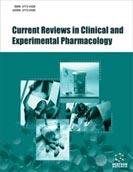Abstract
Background: Monogenic Diabetes (MFD) represents close to 2% of all the cases of diabetes diagnosed in people younger than 45 years old. Maturity-Onset Diabetes of the Young (MODY), neonatal diabetes, and several syndromic forms of diabetes are included among the most accounts for about typical forms of MDF. MODY is the most frequent type of MFD, with MODY 1, 2, 3, and 5 being the most prevalent forms. The aim of this narrative review is to describe pregnancy associated changes in the pharmacological profile of the antidiabetic drugs used in women with the most frequent MODY subtypes.
Methods: A comprehensive literature search was carried out to identify eligible studies from MEDLINE/ PubMed, EMBASE, and SCIELO databases from 1970 to 2019 first semester.
Results: Pregnancy introduces changes in the pharmacodynamic and pharmacokinetic profile of some of the treatments used in MODY. MODY 3 (also known as HNF1-A MODY) is the most frequent MDF. MODY 3 patients are highly sensitive to Sulfonylureas (SU). This is also the case for MODY pregnant women. This high sensitivity to SU is also registered in patients with MODY 1 (HNF4-A MODY). Pharmacodynamic changes have been proposed to explain this behavior (Epac2 hyperactivity). However, changes in expression/activity of the metabolizing CYP2C9 cytochrome and/or alterations in the drug transporters oatp1 (Slc21a1), Lst-1 (Slc21a6), OATPD (SLC21A11), and oat2 may better explain, at least in part, this phenomenon by an increase in the concentration of the active drug.
Conclusion: The impact of changes in the pharmacological behavior of drugs like SU and other metabolized/transported by mechanisms altered in a pregnancy complicated by MODY is unknown. However, switching-to-insulin recommendation formulated for MODY 1 and 3 seems to be justified. Further research in this field is needed for a better understanding of changes in drug activity associated with this particular subset of patients with MFD.
Keywords: Monogenic diabetes, MODY, anti-diabetic drugs, pregnancy, insulin, sulfonylureas.
Graphical Abstract




























